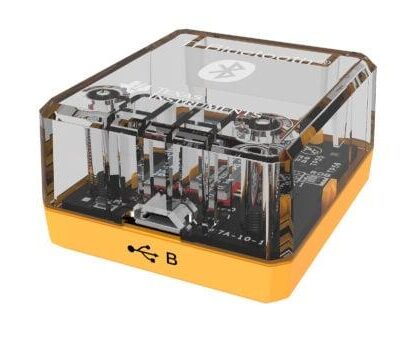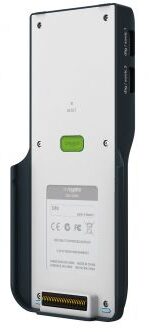Basic Information
- What is needed to use Go Direct sensors with the TI-Nspire DataQuest App?
- Which Go Direct sensors work with the TI-Nspire DataQuest App?
Troubleshooting
- Verify your TI-Nspire CX II or TI-Nspire CX II CAS handheld is running OS version 6.2.0 or newer.
- Verify you are using a supported Go Direct sensor that is fully charged.
- If connecting via Bluetooth®, make sure the TI Bluetooth Adapter is updated with the latest firmware.
- If the sensor fails to connect when using Bluetooth®, try connecting using USB.
- If the sensor fails to connect when using USB, try connecting using Bluetooth®.
- If you continue to have connection issues, try connecting the sensor to a computer, Chromebook, phone, or tablet using our Graphical Analysis app.
For additional assistance, contact us at 888-837-6437 or support@vernier.com.
Frequently Asked Questions
Data Collection Specifications
| Maximum Sample Rate (DataQuest App limitation for Go Direct Sensors) |
200 samples per second (some sensors/sensor channels cannot sample that fast) |
| Maximum Number of Samples | 2500 (any number of sensors/sensor channels) |
| Maximum number of Sensors | 4 via Bluetooth 1 via USB |
| Maximum number of Sensor Channels (per sensor) |
4 via Bluetooth no limit via USB (but more than 4 slows the app) |
| Sensor Calibration | Not supported 5 |
Additional Links
- TI-Nspire Troubleshooting and FAQs
- What is needed to use Go Direct sensors with the TI-Nspire DataQuest App?
- Which Go Direct sensors work with the TI-Nspire DataQuest App?
- The charge indicator LED on my Go Direct sensor is always green when using the Data-Only USB cable.
- Why do my DataQuest App graphs look shaded when using Go Direct sensors via Bluetooth?
- What is different when using the DataQuest App with Go Direct sensors connected via Bluetooth vs. USB?
- How do I calibrate a Go Direct sensor using the TI-Nspire DataQuest App?
- Why does my TI-Nspire calculator battery quickly drain when using Go Direct sensors connected via USB?
- Can I force DataQuest App's graph trace colors for the Go Direct Light and Color sensor to match the color sensors' wavelength colors?
- Can I extend the automatic-power-down (APD) time of my TI-Nspire handheld?
- Can I create TI-Nspire (TNS) template files to use the DataQuest App with Go Direct sensors?
- For Go Direct Sensors with multiple sensor channels, Sensor Channel 1 is the first sensor shown in the list of available sensor channels. If a sensor typically defaults to a different sensor channel (or uses more that one sensor channel), you will need to manually change the sensor channel selection in the DataQuest App. ↩︎
- If you never see any available Go Direct sensors when attempting to connect, it is likely you are running firmware v1.0.0. If when trying to use non-default sensor channels (for example the Motion-Cart for a Go Direct Motion) and your graphs appear shaded because of periodic (and unexpected) near-zero sensor readings, it is likely you are running firmware v1.1.0. ↩︎
- Go Direct Firmware updates can only be applied when the sensor is connected via USB to a computer or Chromebook running our Graphical Analysis app. ↩︎
- The lag is related to the time it takes the TI Bluetooth Adapter to get the data from each connected sensor. Future updates to the TI Bluetooth Adapter may address this lag. A similar lag happens with multiple Go Direct sensors when using the Graphical Analysis app (USB or Bluetooth connection), but that lag is significantly less (around 10 – 20 milliseconds). ↩︎
- Go Direct sensor calibration must be done using our Graphical Analysis or LabQuest Apps. Go Direct sensor calibrations are always stored directly on the sensor, so once a sensor is calibrated, the new calibration will be used when collecting data using the DataQuest App. ↩︎


